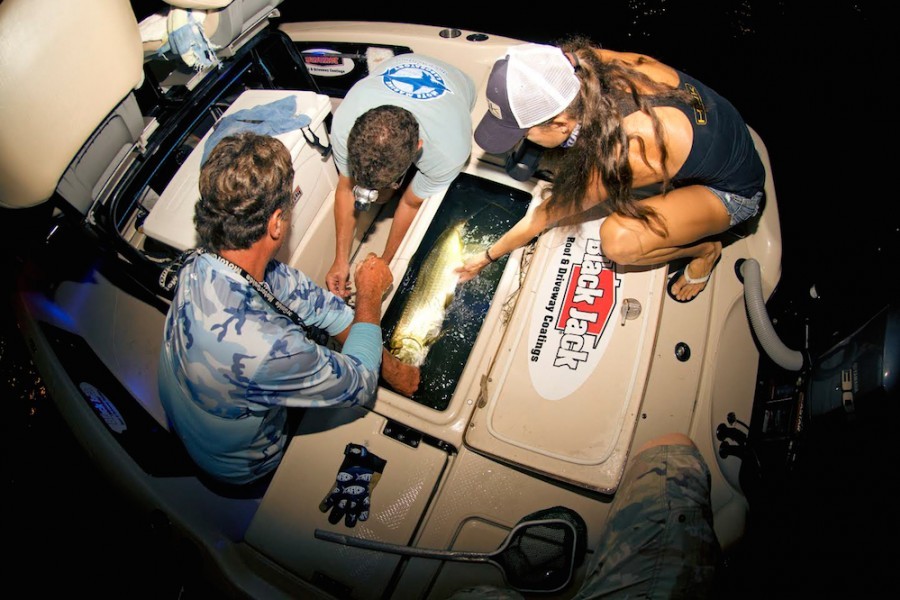Mote scientist to study tarpon migration patterns in Charlotte Harbor
The adrenaline and excitement of tarpon fishing is arguably one of the most sought after recreational activities amongst sports fisherman. Because of its beauty, strength and fighting ability, the tarpon is one of Florida's top game fish. Despite its popularity, information about its life cycle, habitat use and overall behaviors are relatively unknown.
Dr. James Locascio, staff scientist at Mote Marine Laboratory, believes understanding what habitats tarpon need to survive and how they respond to changes in fishing pressure will help protect the tarpon fisheries for future generations to enjoy.
This month, Locascio began his second year of a research project focused on understanding habitat use patterns over different life history stages and fidelity to Charlotte Harbor of adult tarpon that grow up in the area. Tarpon can reach sizes up to 8 feet and can weigh up to 280 pounds. Due to its majestic appearance of size and color, the tarpon is nicknamed "silver king."
“The thrill and the adventure of catching tarpon coupled with the memories created with family and friends is exactly why this fish needs protection and in order to protect it for future generations to enjoy, we need to better understand , patterns in juvenile recruitment to nursery areas of the harbor, where they travel as they grow up and where they spend their time as adults when they spawn,” Locascio said.
Locascio will “listen” for the movements of tarpon in the Charlotte Harbor area by fitting the fish with tags that ping, allowing the tarpon to be detected when they swim near underwater acoustic receivers, which Mote scientists have strategically placed in Charlotte Harbor.
Boca Grande is the deepest natural pass in Florida, and the site of the world’s largest known and predictable aggregation of tarpon.
“The tarpon is an iconic fish in Boca Grande,” Locascio said. “It is a part of the culture and the history, and is in part how the community is defined and Boca Grande has the ability to support this study.”
For this project, Mote has fitting tarpon with acoustic tags that remain active for as long as 10 years in the Boca Grande area. Mote's receivers can detect and record fishes acoustically tagged by Mote and others.
Likewise, receivers deployed by other organizations, such as the Florida Fish and Wildlife Conservation Commission, will detect fishes tagged by Mote, creating a collaborative, data-sharing network. In addition to adult tarpon Mote has tagged in the lower harbor, late juvenile-stage tarpon have also been tagged during summer 2015 in the Peace River, where receivers have detected their presence and movement patterns.
Three juvenile tarpon (estimated to be age 3) tagged by Mote appear to remain in the Peace River as of June 17, 2016. Mote scientists aim to verify and expand upon this finding to better understand the life history of this important sport fish. Future goals include following acoustic-tagged tarpon for years, into maturity, in hopes of tracking their movements to spawning sites and along migration routes. The more data gathered about this important sport fish, the better resources managers can protect its populations.
How you can help identify tarpon habitats
To assist Mote scientists in the success of this project, Mote is asking for help from volunteer anglers skilled in catching tarpon and who have their own boats that can be used for this research project. Researchers can help with fuel costs for trips.
For more information please contact Jim Locascio: locascio@mote.org
Photo capion: Mote staff scientist, Jim Locascio, tags a tarpon off Charlotte Harbor with Capt. Bo Johnson and Diedra Johnson. Credit: Ross Gallagher.
